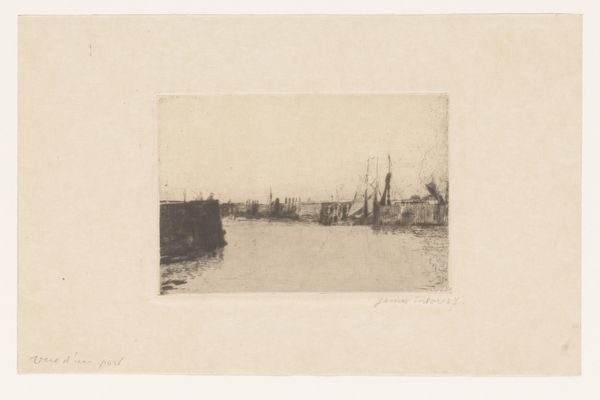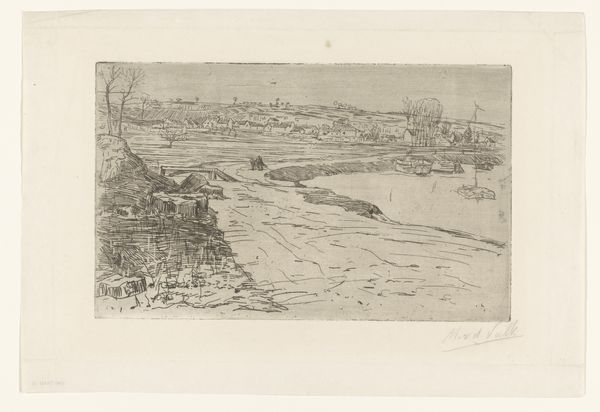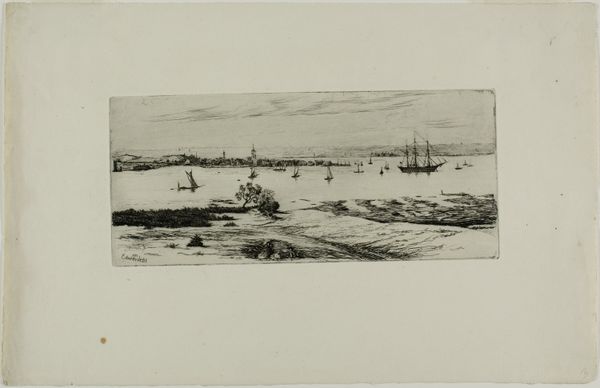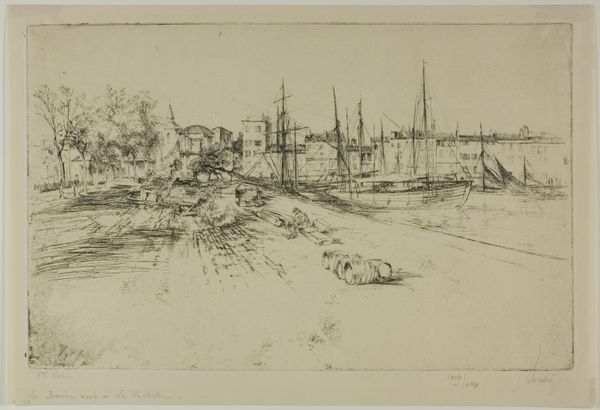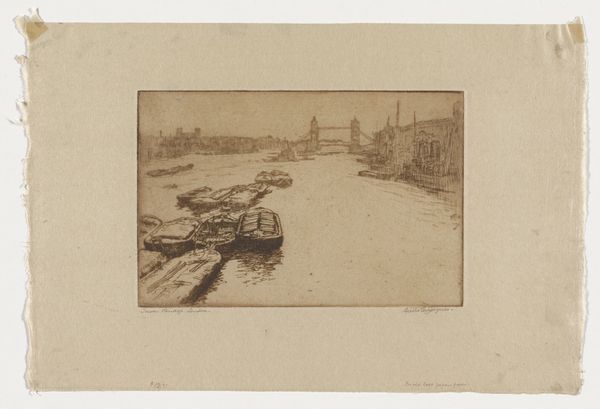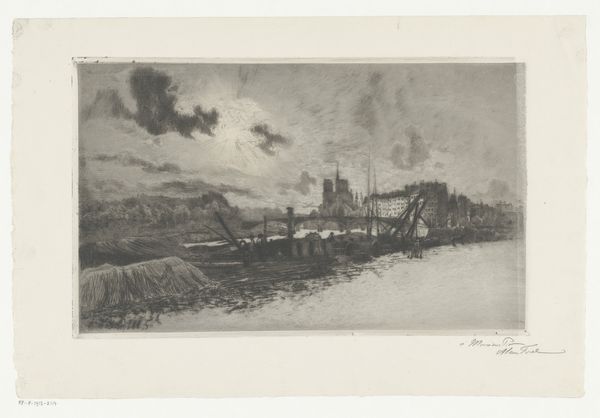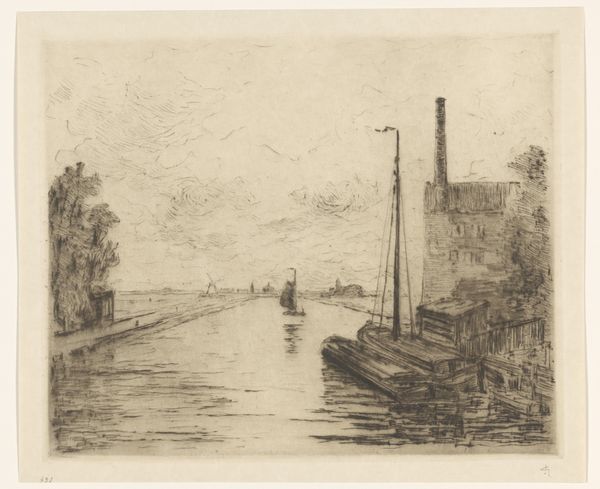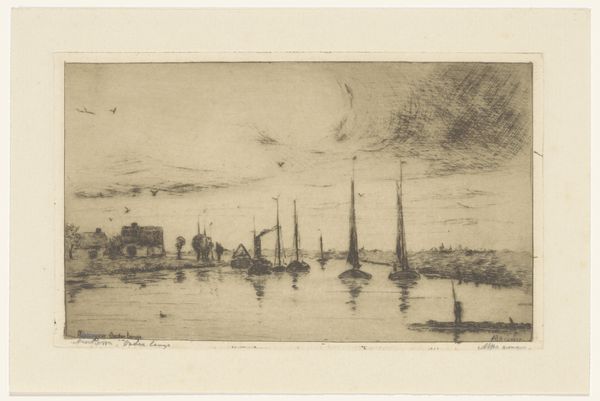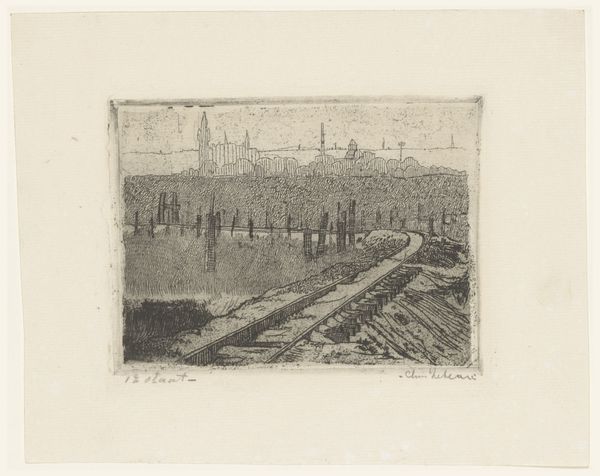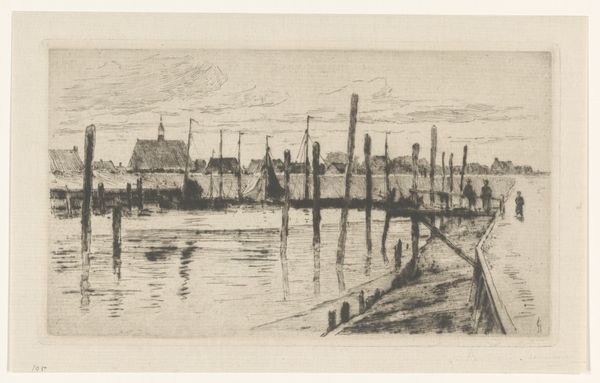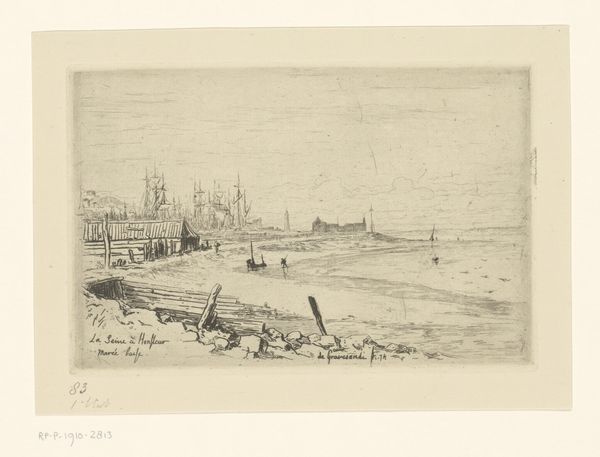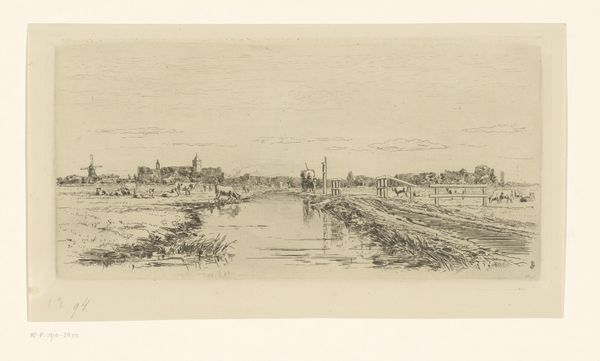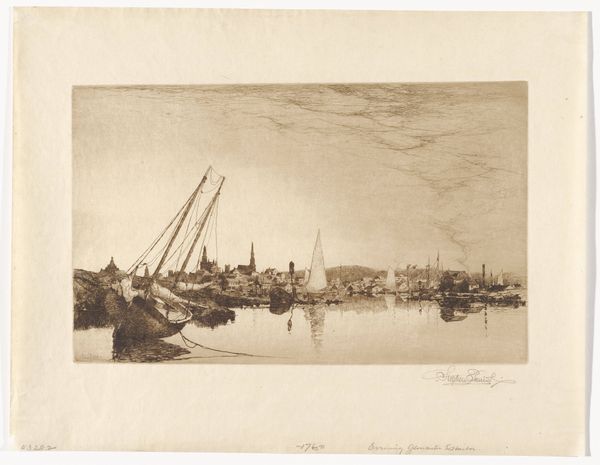
drawing, print, etching, paper
#
drawing
# print
#
etching
#
landscape
#
paper
#
cityscape
Dimensions: 166 × 244 mm (image/plate); 217 × 282 mm (sheet)
Copyright: Public Domain
Curator: Gustave Leheutre's etching, "The Canal d'Eu (near Tréport)", created in 1898, depicts a harborside scene with meticulous detail. What's your first impression? Editor: Well, the subdued tones immediately strike me. It feels melancholic, almost ghostly, with those tall ships rendered in such delicate lines against the misty water. Curator: Yes, Leheutre really captures the atmosphere of a bustling port city in the late 19th century, doesn’t he? The printmaking process itself--the acid etching into the metal plate--allows for a richness in tonal variation that mirrors the industrial environment. You can almost smell the coal smoke. Editor: Exactly! It makes me think about the lives of the people working there, the long hours and hard labor. The almost monochrome palette adds to that sense of hardship, a world before color photography. I see the rigging of the boats mirrored so nicely in the water of the canal. Curator: Absolutely. The Canal d'Eu was, and is, a pivotal piece of infrastructure, and Leheutre shows the underbelly, where industry meets artistry. This was a period where the lines between industry, social class, and art blurred in interesting ways, the workers dependent upon ships like these that enabled commerce and travel but also provided labor for those very same communities. Editor: I wonder what it sounded like there; imagine the calls from ship to shore, the water lapping, and seagulls singing. There’s a timeless quality despite its depiction of industry; like looking into another dimension. Curator: And it's fascinating to consider how an artist in that period navigated depicting such a scene, both documenting the changes and expressing something deeper about modern life and work. Editor: The image feels so authentic and I admire how it avoids romanticizing industrial development and still renders the working harbor scene delicately, don't you think? Curator: Definitely. The perspective helps, placing the viewer slightly above the waterline to see the docks clearly. It highlights both the industrial and artistic labor of the time, showing a commitment to detail and context. Editor: So beautifully wrought; I feel changed. Curator: As do I.
Comments
No comments
Be the first to comment and join the conversation on the ultimate creative platform.
